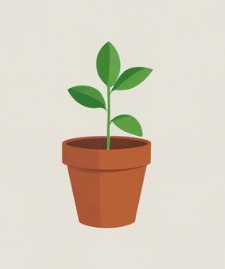One of the standout features of the Garden Tower 2 is its built-in composting tube — a clever little system that lets you turn kitchen scraps into rich, plant-boosting compost right inside your tower.
When I first looked into the Garden Tower 2, this composting feature was one of the things that really impressed me. It saves space, reduces waste, and keeps nutrients cycling directly into your garden — no separate compost bin needed.
Here’s how to get started, step by step.
🪱 What Is the Compost Tube?
Right down the center of the Garden Tower 2 is a vertical cylinder with holes along the sides. This is where your food scraps go — and where your composting worms live and work.
As the worms break down the waste, they produce worm castings (natural fertiliser) that gradually filter out into the surrounding soil pockets. It’s like having a mini worm farm feeding your plants 24/7.
🍎 What to Add to the Compost Tube
Think of it as a worm buffet — but don’t just toss in everything from the kitchen.
✅ Good to add:
- Veggie scraps (carrot tops, lettuce cores, cucumber peels)
- Fruit scraps (banana peels, apple cores — no citrus)
- Coffee grounds and filters
- Crushed eggshells
- Shredded paper or cardboard (great for balance)
🚫 Avoid:
- Meat, dairy, and oily foods
- Onions, garlic, and citrus
- Anything moldy or already rotting
The trick is balance: mix wet “green” waste with some dry “brown” material (like paper or cardboard) to avoid smells or soggy conditions.
🐛 Do You Need Worms?
You can add scraps without worms — but the system works best if you introduce red wigglers. They’re small, surface-dwelling composting worms that love tight spaces like the tube.
Once they settle in, they’ll:
- Break down food scraps quickly
- Enrich the soil with castings
- Help manage moisture and airflow
You only need to add them once. After that, they’ll breed and maintain themselves.
🕓 How to Feed the Compost Tube
Here’s a simple routine that works for most gardeners:
- Add scraps every few days in small amounts
- Cover each addition with a handful of shredded paper or dry leaves
- Rotate where you add scraps (top, middle, other side)
- Moisten slightly if the material is too dry (like a wrung-out sponge)
Don’t overfeed — especially early on. Start slow and increase over time as the worm population grows.
🌱 What Happens to the Compost?
As worms eat and digest the food scraps, they leave behind castings that fall through the holes in the tube and mix with the surrounding soil.
Your plants benefit in two ways:
- Direct fertilization — nutrients move into plant pockets over time
- Soil improvement — better texture, water retention, and root health
Over time, you’ll notice improved plant growth, richer soil, and reduced need for added fertilizers.
💩 Can You Remove Finished Compost?
Yes! You can empty the tube every few months to remove any leftover compost and give it a fresh start.
- Unscrew the top cap
- Use a small trowel to gently scoop out material
- Add it to raised beds, pots, or back into the soil pockets
You’ll often find worm castings, leftover paper, and a few happy worms — just return them to the system.
✅ Final Thoughts
The composting core is one of the features that makes the Garden Tower 2 more than just a vertical planter. It turns food waste into rich, living soil — all in one compact system.
It might take a little practice at first, but once you get the hang of it, you’ll wonder why every garden doesn’t work this way.
